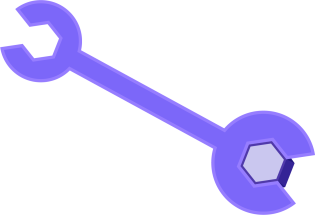Valve Maintenance Guide: Preventive Measures and Scheduling Best Practices

Picture this: you’re in the valve maintenance business, and your valves are giving you more headaches than a stubborn mule with a grudge. Fear not! We’re here to rescue you from valve-induced misery with our ultimate valve maintenance guide.
Valves are crucial components in various industries, responsible for controlling the flow of fluids and gasses. Maintaining valves in proper working condition is essential to ensure optimal performance, prevent costly breakdowns, and extend their lifespan.
In this comprehensive valve maintenance guide, we will explore various aspects of valve maintenance, providing valuable insights and practical tips to help field service businesses optimize their maintenance processes. Let’s dive into the importance of asset management in this how-to guide.
Understanding Your Valve System
Valve systems consist of various components that require routine maintenance. The valve stem, seals, and springs are critical parts that need attention. The valve stem enables the opening and closing of the valve, while seals prevent leaks. Springs provide the necessary force for valve operation. By understanding these components, you can identify areas that require maintenance and ensure smooth valve operation.
The Importance of Regular Valve Maintenance
Consistent maintenance is key to the efficient operation and lifespan of valve systems. Neglecting maintenance can result in leaks, decreased performance, and even costly breakdowns. Regular maintenance helps identify potential issues before they escalate, reducing the risk of unplanned downtime and ensuring the longevity of your valve systems. With a maintenance program and proper installation, you can ensure you keep your industrial valves clean.
Essential Checks for Valve Systems
To maintain optimal performance and keep your valve systems running smoothly, it’s time to put on your detective hat and perform some essential checks. Trust us, your valves will thank you for it!
- Leaks: Hunt down those sneaky leaks like a leak detective on a mission. Check for any signs of leakage around valve joints, connections, or valve seals. Even the tiniest drip can indicate a potential problem that needs immediate attention. Remember, a leaky valve is like a faucet that refuses to turn off—it can lead to wasted resources, decreased efficiency, and unhappy customers.
- Corrosion: Corrosion is the arch-nemesis of valve longevity. Take a good look at your valves and keep an eye out for any signs of rust, pitting, or deterioration. Corroded valves not only compromise performance but can also pose safety risks. If you spot any corrosion, it’s time to roll up your sleeves and take action to protect your valves from further decay.
- Mineral Deposits: Valves can suffer from a build-up of mineral deposits, especially in areas with hard water. These deposits can clog up valves, obstructing the smooth flow of fluids and reducing their effectiveness. Look for any crusty or scaly deposits around valve openings, seats, or internals. Regularly removing these deposits will ensure that your valves continue to operate efficiently, preventing potential blockages and reducing the risk of system failures.
- Wear and Tear: Moving parts of valves, such as the valve stems, valve cavity, seals, and springs, undergo constant motion and may experience wear and tear over time. Inspect these components for signs of damage, excessive wear, or misalignment. Look out for frayed seals, bent stems, or weakened springs. Addressing these issues promptly by repairing or replacing worn-out parts can significantly extend the lifespan of your valves and maintain their optimal performance.
Remember, prevention is the name of the game when it comes to valve maintenance. Regularly conducting these essential checks will help you catch potential issues before they escalate into costly problems and boost the life of your valves. It’s like giving your valves a health check-up to ensure they’re in their best shape and ready to tackle any fluid flow challenge that comes their way.
The Role of Preventive and Predictive Maintenance in Valve Systems
Preventive maintenance involves scheduled inspections and maintenance tasks to prevent issues from arising. Predictive maintenance, on the other hand, utilizes data and analytics to identify potential failures and perform maintenance before they occur. By employing both preventive and predictive maintenance strategies, you can minimize downtime, optimize performance, and extend the lifespan of your valve systems.
The Significance of Regular Cleaning and Lubrication (Avoid Leaking Valves)
Regular cleaning and lubrication are the dynamic duo that keeps valves in prime condition. Think of them as the Batman and Robin of valve maintenance, swooping in to save the day!
Cleaning: Picture your valves as brave warriors fighting against the forces of dirt, debris, and mineral deposits. Over time, these contaminants can accumulate and wage war on your valve’s performance. But fear not, for proper cleaning is here to save the day! Using suitable cleaning agents recommended by the manufacturer, gently remove any gunk or buildup that has taken refuge within your valves. Pay special attention to valve seats, internal passages, and seals, ensuring they are free from obstructions. This thorough cleaning will prevent clogs, maintain optimal flow, and keep your valves performing at their best.
Lubrication: Just like a well-oiled machine, valves need proper lubrication to ensure smooth operation and reduce the wear and tear on their moving parts. Lubricants act as the secret sauce that minimizes friction and keeps those components gliding seamlessly. Applying lubricant to valve stems, seals, and other moving parts not only prevents them from getting stuck or jammed but also extends their lifespan. It’s like giving your valves a spa treatment, pampering them with the right lubricant to keep them operating like well-oiled champions.
With a preventive maintenance program, you can ensure there is minimal valve malfunction and reliable operation.
But wait, there’s more! Here are some practical tips to make your cleaning and lubrication of your internal components efforts even more effective:
- Use the right tools: Invest in brushes (wire brush), swabs, and other cleaning tools specifically designed for valve maintenance. These tools will help you reach tight spots and ensure a thorough cleaning.
- Follow manufacturer guidelines: Different valves may require specific cleaning agents and lubricants. Always refer to the manufacturer’s recommendations to ensure you’re using the most suitable products for your valves.
- Be gentle: Valves are delicate creatures, and rough handling during cleaning can cause damage. Handle them with care and avoid using excessive force that could lead to unnecessary wear or breakage.
- Create a cleaning schedule: Incorporate regular cleaning and lubrication into your maintenance schedule. Set reminders to ensure these tasks are performed at appropriate intervals, keeping your valves in top-notch condition consistently.
By diligently cleaning and lubricating your valves, you’re not only maximizing their efficiency but also prolonging their lifespan. It’s like giving your valves a ticket to the fountain of youth, enabling them to withstand the test of time and continue operating reliably.
Remember, a clean and well-lubricated valve is a happy valve. So grab your cleaning supplies, don your superhero cape, and give your valves the TLC they deserve. Your field service business will benefit from valves that perform flawlessly, keeping operations running smoothly and customers delighted with your top-notch service.
The Importance of Routine Inspections and Health Check-ups
Routine inspections and health check-ups play a vital role in maintaining the efficiency of valve systems. By conducting regular inspections, you can identify potential issues early on and take necessary corrective measures. Health check-ups involve comprehensive evaluations of valves to assess their overall condition and performance, enabling proactive maintenance.
Preparing for Unexpected Setbacks: The Role of Spare Components and Emergency Repairs
Being prepared for unexpected setbacks is crucial. By having spare components readily available, you can minimize downtime in case of component failures. Establishing procedures for emergency repairs ensures prompt resolution of issues. We discuss the benefits of being prepared and offer insights on developing contingency plans.
With proper maintenance you can ensure that you are increasing valve life expectancy and taking good care of all the critical components for your asset management.
Leveraging FieldInsight for Preventative Valve Maintenance
FieldInsight is not your ordinary field service software—it’s a superhero in disguise, ready to revolutionize your valve maintenance game! Let’s dive into the incredible features that make FieldInsight an indispensable tool for managing valve maintenance with ease.
- Seamless Scheduling: Get on top of your valve maintenance routine! Say goodbye to the chaos of managing maintenance tasks manually or relying on spreadsheets. FieldInsight’s robust scheduling feature allows you to create and assign maintenance jobs effortlessly. With just a few clicks, you can allocate the right technicians to the right valve maintenance tasks, ensuring optimal resource utilization and efficient task distribution. No more missed appointments or confusion about who should be where—it’s like having your very own scheduling sidekick!
- Task Tracking: Tracking maintenance tasks has never been more straightforward. FieldInsight provides real-time visibility into the progress of each valve maintenance job. You can track task status, monitor completion rates, and receive notifications when tasks are completed. This level of transparency empowers you to stay on top of your valve maintenance operations, ensuring that nothing falls through the cracks. It’s like having a vigilant watchdog guarding your maintenance tasks and keeping you informed every step of the way.
- Optimize Maintenance Processes: FieldInsight streamlines your valve maintenance processes, eliminating unnecessary paperwork and manual data entry. Technicians can access job details, maintenance checklists, and equipment history directly through the FieldInsight mobile app. This eliminates the need for cumbersome paperwork and ensures that critical information is readily available at their fingertips. The result? Increased productivity, reduced errors, and a smoother flow of information between the field and the office.
- Accurate Record Keeping: Say goodbye to the frustration of digging through piles of paperwork or searching countless folders for past maintenance records. FieldInsight allows you to maintain accurate and organized records of all your valve maintenance activities. You can store equipment details, maintenance history, inspection reports, and even customer feedback within the software. This centralized repository ensures that valuable information is easily accessible whenever you need it, making audits, reporting, and future reference a breeze.
FieldInsight isn’t just a software solution; it’s a trusted partner that supports you in optimizing your valve maintenance operations. By harnessing the power of FieldInsight, you’ll experience increased efficiency, enhanced productivity, and improved customer satisfaction.
So, suit up with FieldInsight and let it be your sidekick in the world of valve maintenance. Say goodbye to manual scheduling headaches, tracking troubles, and paper-based chaos. Embrace the streamlined processes, accurate record-keeping, and seamless collaboration that FieldInsight brings to the table. Your valve maintenance efficiency will soar, and your field service business will thrive like never before.
Takeaways for Your Preventative Maintenance Procedures
Valve maintenance is a vital aspect of ensuring optimal performance and longevity of valve systems. By understanding your valve system, conducting regular checks, employing preventive and predictive maintenance, performing cleaning and lubrication, conducting routine inspections, and being prepared for unexpected setbacks, you can keep your valve systems in top shape.
FieldInsight as a job management software, offers valuable tools to streamline and enhance your valve maintenance processes. Don’t hesitate to explore FieldInsight as a comprehensive solution for efficient and effective valve maintenance.
What You Should Do Now
- Book a Demo. You’ll be in touch with an automation expert who has worked in this space for over 5 years, and knows the optimal workflow to address your needs.
- If you’d like access to free articles about managing HVAC workflows, go to our blog.
- If you know someone who’d enjoy reading this page, share it with them via email, Linkedin, Twitter, or Facebook.



